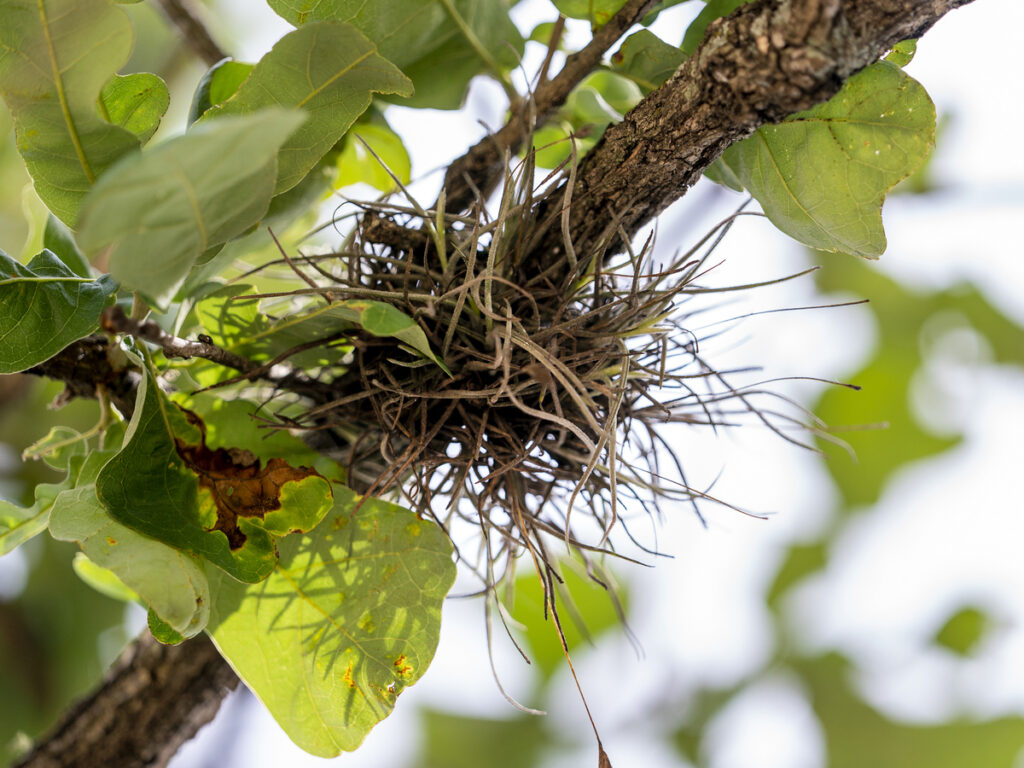Ball moss (Tillandsia recurvata) is a plant commonly found clinging to limbs of live oaks and other trees in the Southern U.S. It is in the Bromeliad family and related to Spanish moss (Tillandsia usneoides) and pineapple (Ananas comosus).
It can also be found growing on telephone wires and fences. Ball moss can grow on these unusual surfaces because it is an air plant. It is not parasitic. It does not root into the tree or take nutrients or water from it. Rather, it makes its own food and gets the water it needs from the atmosphere.
Ball moss prefers to grow in a shady, humid environment. The lower and inner branches of a tree provide this perfect spot.
Often, you will see dead limbs covered in ball moss and think this plant is responsible. Instead, the limbs died from lack of sunlight, a natural process for many trees, and not ball moss. If trees are declining or dead and covered in ball moss, something else caused the issue, like drought stress, construction impacts, or disease.
Occasionally you will see a healthy tree covered in ball moss, especially if it’s growing in a humid environment. In this instance, the ball moss plants may compete with the tree’s leaves for space and sunlight but will not significantly impact the tree.
Removal of ball moss is rarely necessary and often discouraged as it does not harm the tree and provides habitat for insects that, in turn, benefit songbirds and other animals. Ball moss is often removed to improve the looks of the tree. But removals do not improve tree health.
If removal is desired, it can be picked, pruned, or sprayed. Using a combination of all three methods will give the best results. Please keep safety in mind when picking ball moss from a tree. Don’t over-extend yourself, especially if using a ladder.
When pruning oaks, avoid pruning February through June and immediately paint all cuts to reduce the risk of oak wilt. Focus on dead limbs as most of the ball moss will be on these branches.
When spraying, follow all label instructions. Labelled products containing copper hydroxide are effective in killing ball moss. Lastly, avoid spraying in early spring when live oaks are putting on new, tender leaves.
